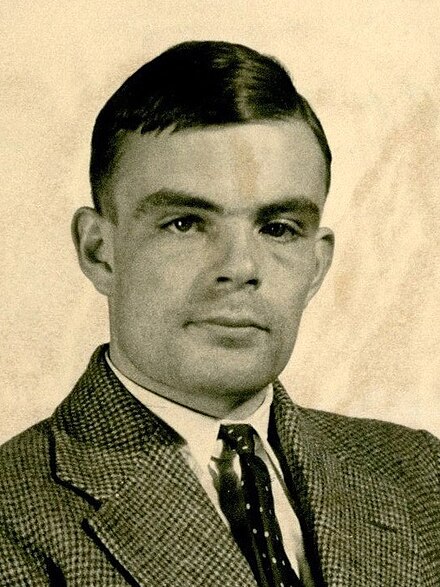Background
In mathematics and computer science, the Entscheidungsproblem (“decision problem”) is a challenge posed by David Hilbert and Wilhelm Ackermann in 1928.
David Hilbert was a well-known German mathematician, and together with his collaborator Wilhelm Ackermann they were influential figures in the mathematical community during the early 20th century.
In their work titled “Grundzüge der theoretischen Logik” (Principles of Mathematical Logic), Hilbert and Ackermann introduced the Entscheidungsproblem as part of a broader exploration of the foundations of mathematics.
This “problem” poses the question of whether “there an algorithm that will take a formal language, and a logical statement in that language, and that will output “True” or “False”, depending on the truth value of the statement? The algorithm does not tell how it reaches the answer, nor prove it, as long as the answer is always correct” (Ref#: E).

The Answer
Both Alonzo Church and indeed Alan Turing independently demonstrated, using their own methodologies, that there can be no answer to the Entscheidungsproblem, or in other words that it is unanswerable.
It’s “impossible for an algorithm to decide whether statements in arithmetic are true or false”, this means there can never be a solution to the decision problem.
axiom = “An axiom or postulate is a statement that is taken to be true, to serve as a premise or starting point for further reasoning and arguments. The word comes from the Greek axíōma (ἀξίωμα) ‘that which is thought worthy or fit’ or ‘that which commends itself as evident.’“
By the completeness theorem of first-order logic, a statement is universally valid if and only if it can be deduced from the axioms, so the Entscheidungsproblem can also be viewed as asking for an algorithm to decide whether a given statement is provable from the axioms using the rules of logic.
The Halting Problem
This asks, with a given problem and some input, will it (a computer program) ever halt?
The finding on the Entscheidungsproblem by Alonzo Church and Alan Turing (that is is unanswerable) marked a significant turning point in the understanding of the limits of computation. While both approaches, lambda calculus by Church and Turing machines by Turing, were distinct, they arrived at the same conclusion: there is no general algorithm that can decide the truth value of any logical statement. This revelation had profound implications for the field of mathematics and computer science, laying the groundwork for the development of theoretical computer science.
Church demonstrated that the Entscheidungsproblem is undecidable by mapping it to the problem of determining whether a particular formula in lambda calculus is universally valid.
Turing, on the other hand, formulated the idea of Turing machines, theoretical devices capable of performing any computation that could be described by an algorithm, and this was used to explore this problem.
The implications of the undecidability of the Entscheidungsproblem extend beyond the specific question posed by Hilbert and Ackermann. It calls into question the possibility of creating a complete and consistent set of axioms for all of mathematics. This led to the development of alternative approaches, such as Gödel’s incompleteness theorems, which demonstrated the inherent limitations of any formal mathematical system.
Theoretical Computer Science is a branch of computer science that delves into the exploration and understanding of fundamental principles, concepts, and mathematical structures underlying computation. It is concerned with the study of algorithms, formal languages, automata, and the inherent limits of computation. Theoretical computer scientists strive to develop abstract models and frameworks to analyze the computational aspects of problem-solving, seeking solutions that are not bound by the constraints of specific technologies or programming languages. Central topics within theoretical computer science include computational complexity, computability theory, and formal languages, all of which contribute to a deeper comprehension of the possibilities and limitations of computation. Researchers in this field aim to establish the theoretical foundations that guide the design and analysis of algorithms, ensuring the development of efficient and reliable computing systems across various applications.
Connection to the Halting Problem
Furthermore, the undecidability of the Entscheidungsproblem connects to the concept of algorithmic decidability in the form of the Halting Problem.
Proposed by Alan Turing, this problem addresses the fundamental question of whether a given computer program, when provided with certain input, will eventually halt or continue running indefinitely. Turing proved that there is no general algorithm that can determine whether an arbitrary program will halt for all possible inputs. The undecidability of the Halting Problem reinforces the broader conclusion drawn from the Entscheidungsproblem — the existence of fundamental limitations in what algorithms can achieve.
In conclusion, the Entscheidungsproblem, initially posed as a challenge in formal logic, led to groundbreaking insights into the nature of computation and the boundaries of algorithmic solvability. Church and Turing’s independent proofs not only settled the specific problem but also paved the way for the establishment of theoretical computer science as a discipline. The undecidability of the Entscheidungsproblem and its connection to the Halting Problem underscore the fundamental constraints on what can be algorithmically determined, shaping the trajectory of computer science and mathematical logic in the decades that followed.
References:
A: https://www.youtube.com/watch?v=macM_MtS_w4
B: https://en.wikipedia.org/wiki/Entscheidungsproblem
C: https://www.britannica.com/biography/Alan-Turing
D: https://www.britannica.com/biography/Anne-McLaren
E: https://simple.wikipedia.org/wiki/Entscheidungsproblem
F: https://en.wikipedia.org/wiki/Turing_Institute
G: https://en.wikipedia.org/wiki/Halting_problem
![]()

Comments